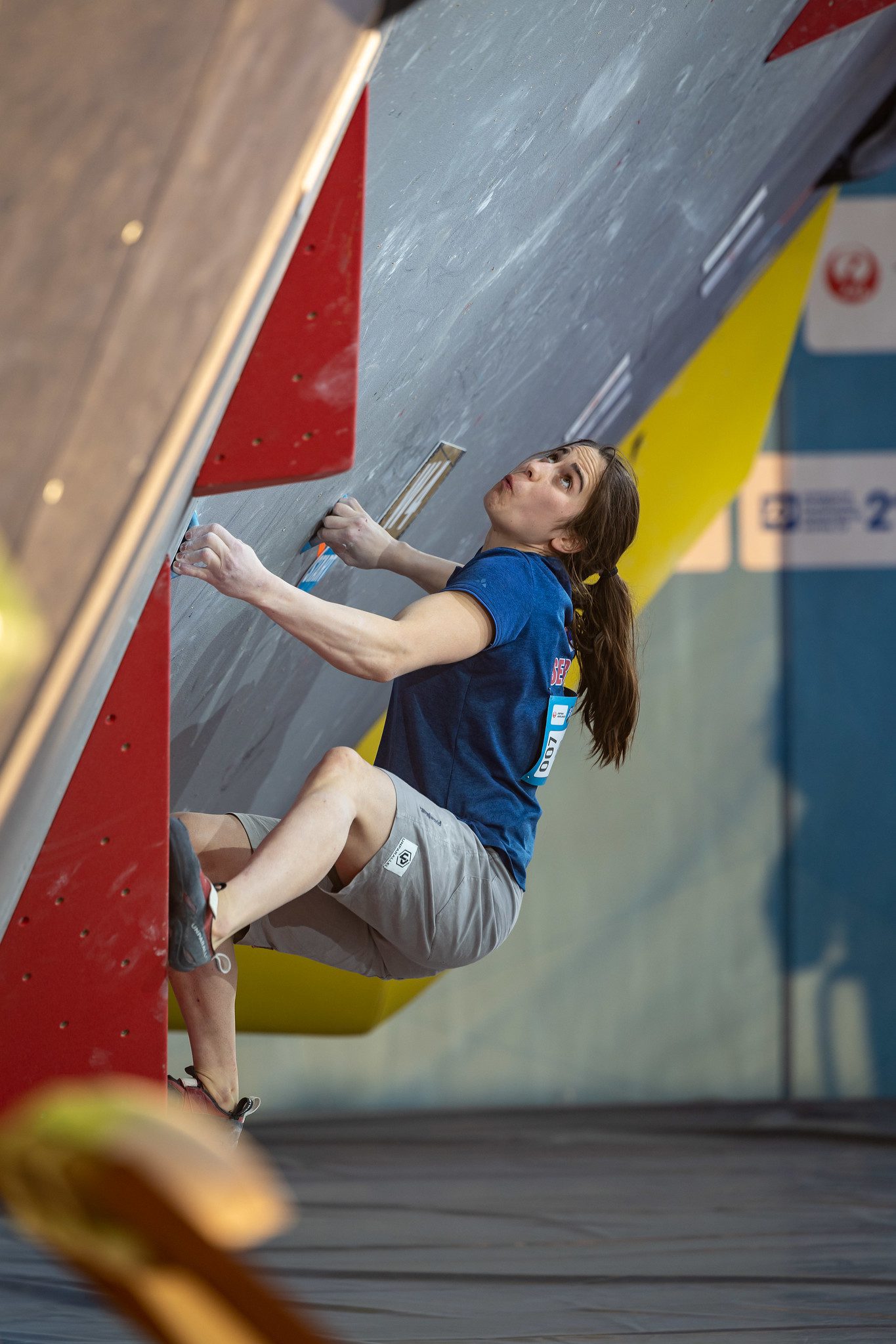Climb 20 Boulder Problems in 20 Minutes
This classic power endurance workout is great for beginner and intermediate climbers
 Photo by: Jan Virt/IFSC
Photo by: Jan Virt/IFSC
Are you working a route that’s made up of a series of stacked boulder problems and you just can’t seem to get through that last crux section without falling off? It might be time to train your power endurance. Luckily, power endurance can be improved rather quickly – much faster than pure power or strength – and there are lots of fun exercises that you can use to improve it.
Power endurance is different than regular endurance and therefore, deserves its own dedicated training. Routes defined by power endurance are often steep, dynamic, and bouldery, with limited rest opportunities between crux sections. Long, exhausting boulder problems can also be classified as power endurance climbs.
When we climb these types of routes and problems, we are continuously performing moves near our limit, fatiguing fast-twitch muscle fibers in our forearms, biceps, shoulders, back, chest, and core. Because these fibers are not activated in less intense endurance training, we must put them through unique training to strengthen their metabolic pathways and prevent that dreaded fall-inducing pump.
There are lots of great exercises for building power endurance such as bouldering 4x4s and lead route laps. Perhaps the most fun of them all is the classic “20 problems in 20 minutes” protocol. The workout is just what it sounds like – you climb 20 boulder problems, spending around a minute per problem (including rest).

Here’s a typical outline of a “20 problems in 20 minutes” bouldering workout:
- Choose a set of 20 boulder problems a couple of grades or so under your maximum onsight level. The problems should ideally be around six to eight moves long. You can use your gym bouldering wall, spray wall, Kilter Board, or Moon Board. If you are going to be using a board at your local gym, do so during a quiet time as you’ll be hogging the board for 20 minutes.
- Start a 20-minute timer and jump on your first problem. Climb the problem as you would normally. Use good technique throughout. Think about your footwork and body positioning and don’t over-grip.
- After you complete the first problem, drop or climb down and wait the remainder of the first minute before jumping on the next problem. The problems in this exercise should ideally take you around 25 to 30 seconds to complete from start to finish, leaving you with roughly 30 seconds of rest before starting the problem.
- During your rest periods, start reading the next problem. Shake your arms and chalk up. Keep your eye on the timer so that you don’t fall behind.
- As you move through the problems and your fatigue grows, continue to maintain good footwork and body positioning. In other words, don’t flail. This exercise serves as a great opportunity for both working your power endurance and your technique.
- At the end of the workout, write down which problems you climbed (successfully or unsuccessfully) in your training logbook.
You should ideally successfully complete 80 to 90% of the 20 problems during your workout. If you are failing considerably more than this, consider choosing easier problems in your next power endurance training session. You should definitely be developing a high level of pump during this workout. If you found your circuit quite easy to complete, increase the intensity at your next session. Perform this workout once per week during a power endurance training day.



